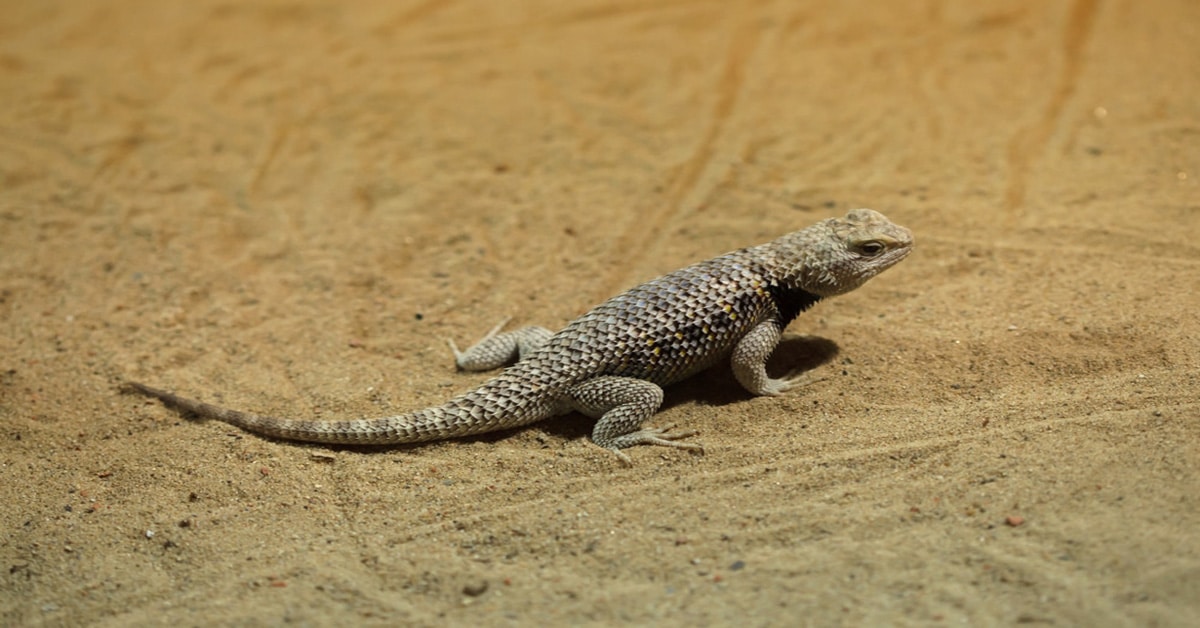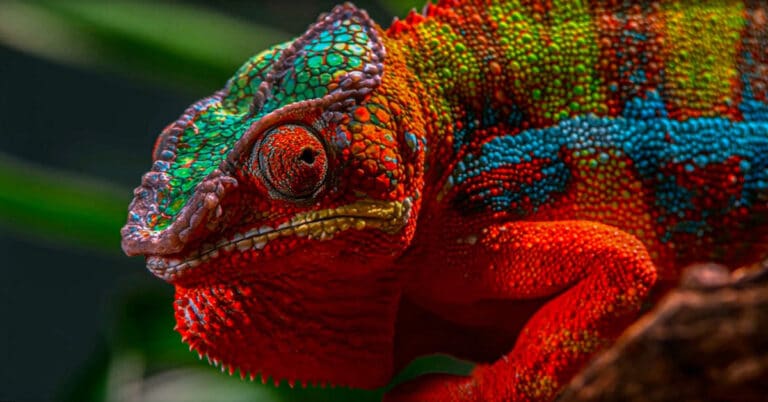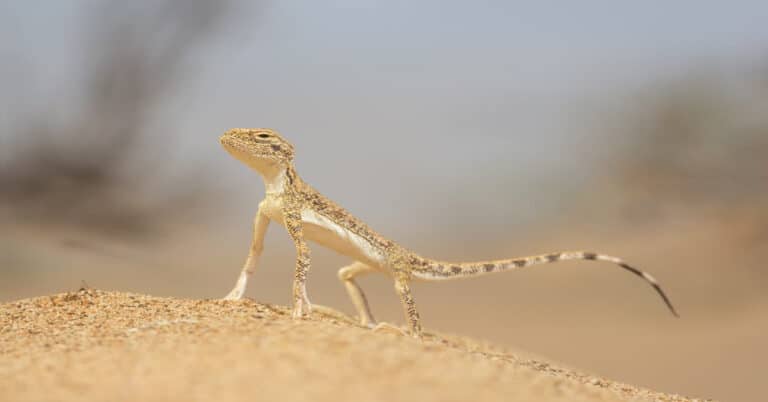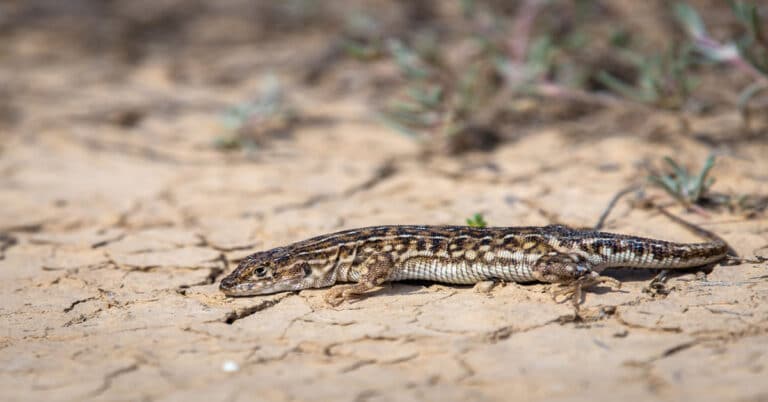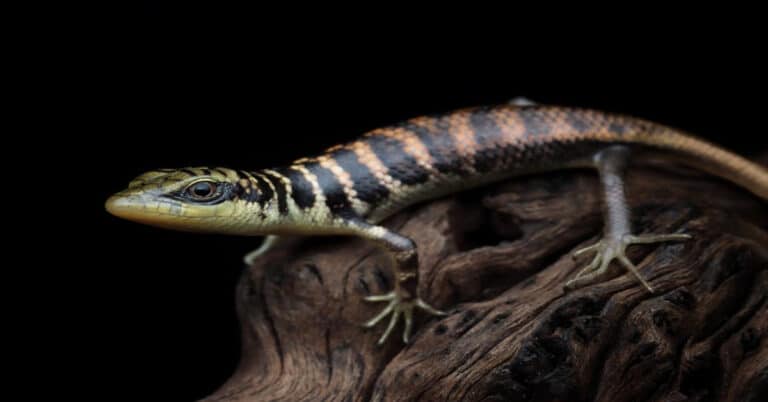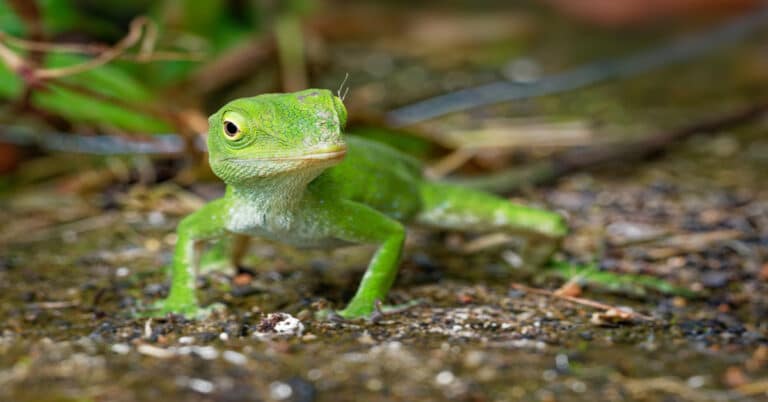Desert Lizards
Scientific Classification
| Kingdom: | Animalia |
| Phylum: | Chordata |
| Subphylum: | Vertebrata |
| Class: | Reptilia |
| Order: | Squamata |
| Suborder: | Lacertilia |
| Family: | Phrynosomatidae |
| Genus: | Phrynosoma |
| Species: | P. Platyrhinos |
| Binomial Name: | Phrynosoma Platyrhinos |
When the desert becomes extremely hot, lizards resort to estivation, meaning a period of inactivity. They go without much water and food and their breathing and heart rates slow down. Lizards are cold-blooded reptiles, and as such, if the desert heat increases intensely, they will burn to death. Normally when resting, they conceal themselves underground, and they become stationary during that period. This is the way they adjust to the climate they live in.
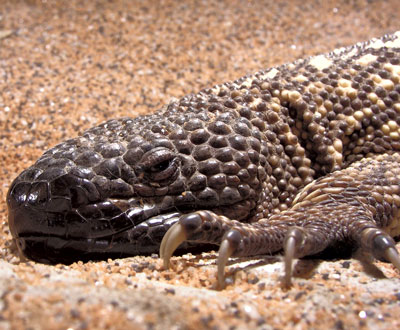
Desert Horned Lizards
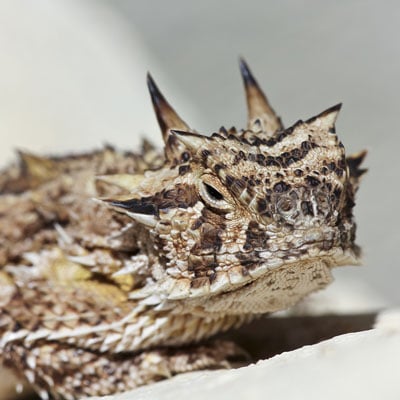
These particular types of lizard have a distinguished flat body having a row of fringed scales below at the sides, merging with the surrounding soil color. Their dorsum is tan, beige or reddish back, with darker colored wavy spots in contrast. The two blotches on the neck are very conspicuous and dark in color. They have a gray or dull white colored border on the posterior. The back of the body is covered with pointed scales. The cranial spines of the juveniles are less pronounced and shorter, and resemble the adult.
The Desert horned lizard has wide based horns. This is not true with the short horned lizard which is of the same genus.
Diet
The diet of the desert horned lizard consists mainly of invertebrates, like crickets, beetles, flies, ants (including red harvester ants), grasshoppers, worms and a few types of vegetables found in in proximity to anthills. They remain here waiting for the ants to pass by. When they locate a place where they find soft sand, they shake themselves energetically throwing sand over their backs, exposing only their heads out of the soil. This method permits them a camouflage against attack by predators and also allow them to wait and stalk their unsuspecting prey.
Habitat
You can see them in many diversified habitats; the flat tailed horned lizard dwells in locations where the sand is fine, and the short horned lizard (P. Douglassii) inhabits short prairie grasslands right through the northern Spruce-fir forests. The regal horned lizard (P. Solare) is the well known species in the Arizona Upland subdivision. They often dwell in gravely or rocky planes that are semi-dry to dry, lower mountain slopes and hills.
Geographic Range & Subspecies
Their range extends from the south of the Northern provinces of Mexico to the Southern provinces of Idaho in the North.
Two species of these lizards exist:
The Northern desert horned lizard
(Phrynosama platyrhinos platyrhinos)
You can find these varieties in Southeast Oregon, Wyoming, Nevada, Utah, Idaho as well as the front range of Colorado.
The southern desert horned lizard
(phrynosoma platyrhinos calidiarum)
These lizards exist from California, southeast part of California, Western regions of Arizona, to the Southern province of Utah and Nevada.
Reproduction
These lizards, after mating during spring, in the months of June & July, lay 2 to 6 eggs. They hatch somewhere in the months of August. The incubation period is 50 to 60 days. They attain maturity at around 22 months of age.
Behavior
These species are normally gentle in nature, but when you hold them, they attempt to push their cranial spines into your hands. When thrilled, they bloat themselves with air, just as the chuckwalla does, making them to appear larger. If you see them in a bush, they rush into the bush, trying to conceal themselves from their predator. When some predator bullies them, they hiss (but rarely) as a warning of biting. These reptiles squirt blood from their eyes to a distance of 5 feet.
Some Of The Other Prominent Desert Lizards
The Desert Night Lizard
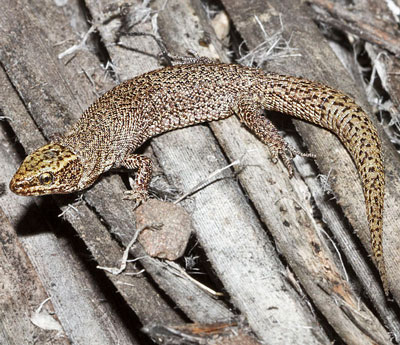
Xantusia vigilis, the Desert Night Lizard is a reptile that inhabits southern California lying east of the Sierras and San Gabriel Mountains and extending to Baja California, South West Utah, southern Nevada and extreme western Arizona,
Similar to all the other night lizards, the desert night lizard is viviparous (delivering young ones developed inside the body); it delivers 1 to 3 young live lizards during the months of August to December. The length of the night lizard is 11/2 to 21/2 inches; its tail is almost the same length. The color of the lizard is normally olive, yellow with brown tint or gray. Even though its name is night lizard, at times it becomes active during the day. They are famous for quickly changing their color from dull olive (normally at evenings) to deep brown at daytime. It is an excellent climber and generally feeds on small insects, termites, spiders and several other arthropods. It prefers semi-arid and arid areas. At day time It finds shelter in rock crevices and under fallen debris of desert plants. Generally, you can find them among varieties of yucca like the Spanish Dagger, the Joshia tree and Spanish bayonet.
Lizards in general, get together into family units comprising of father-mother pair and offspring; this system takes years for them to spread their species. Young ones, although talented in self feeding, will gather together among their own. Older siblings and the parents do not directly take care of the young ones, yet you can find little information about the benefits they receive from being with their parents. The baby lizards that are just the size of a toothpick are always in a state of proper camouflage. Here are some more really unique reptiles found in the desert.
Gila Monster (Heloderma Suspectum)

Let us begin with the one and only poisonous desert lizard, The Gila Monster. These unwieldy and sluggish reptiles find safety in the desert. The Gila Monsters have good looks with varieties of color designs. They dislike handling or relocation.
Chuckwalla (Sauromalus alter)
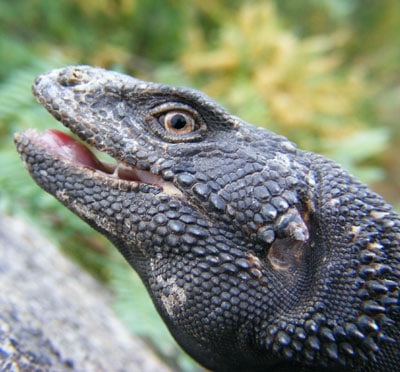
These lizards confine to the desert with hardly any requirements including water. They have a simple and self satisfied life style. The mating male Chuckwalla has noticeable bright colors.
Desert Iguana (Dispososaurus dorsalis)
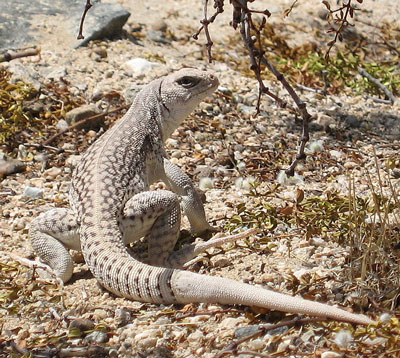
This is a proud desert lizard. This is everyone’s favorite Iguana lizard. They appear high-spirited and arrogant. These lizards, with good looks, are among the lizards that bear temperatures of up to 110° F, while the other lizards go into hiding places, under shade, under rocks or into holes to escape the heat.
Collared Lizard (Crotaphytus bicinctores)
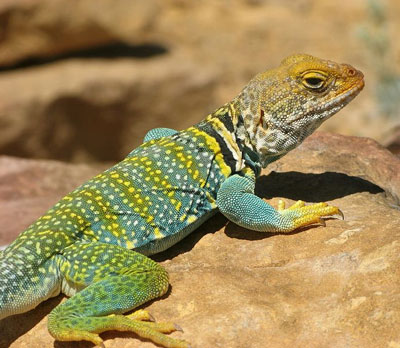
This is the great basin Collared Lizard with an appealing design on the body. His tail is very long; he has a set of healthy teeth and strong jaw muscles. He is one among the desert’s most appealing lizards.
Sonoran Collared Lizard (Crortaphytus nebrius)
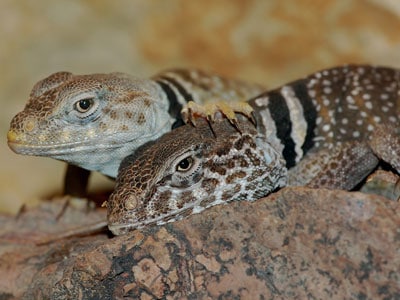
The Sonoran Collared Lizard is another collared lizard. In the species of Collared lizards you will find some differences in their variations and colorization. When you enlarge a picture, you get a better view of the bands round their neck.
Spiny Lizard (Sceleporus Magister)
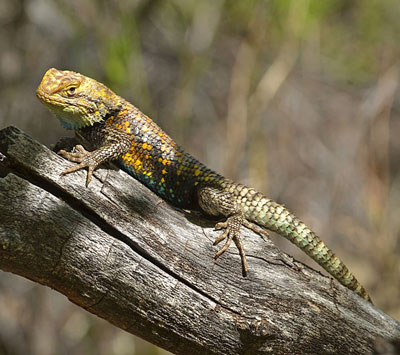
This is a spiny lizard, as its name signifies and sharp pointed spiny scales cover its body. Their eyes are red and cute. The jaws of these desert lizards are strong; hence avoid their bites. These lizards are supposed to have a high level of intelligence, a fact that their brain size substantiates.
Leopard Lizard (Leopard Lizard)
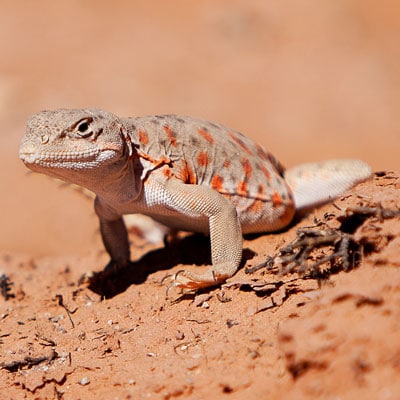
The leopard lizards are dangerous, hence beware of them. Their jaws and teeth are very strong, they also have special markings with divergent patterns and a color suited to the desert environment. They are very fast. You can see their thicker claws by looking at an enlargement.
Side-Blotched Lizard (Uta stansburiana)
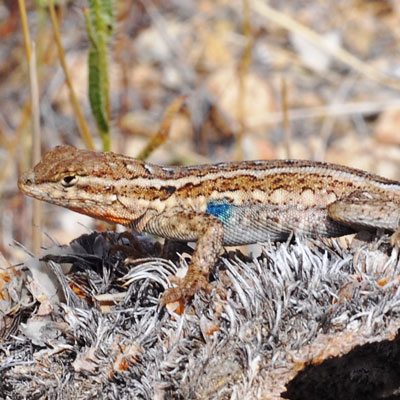
You see plenty of these side-blotched lizards in the desert. In order to have a clear view of the black blotches on their sides, for which they got their name, minutely look at them several times. It is not always apparent.
Zebra-tailed Lizard (Callisaurus Draconoides)
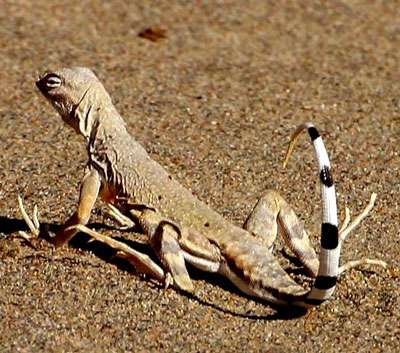
Zebra-tailed lizards are female lizards. It is possible to identify this desert lizard with a yellow color, spotted with red dots. Only an enlarged view will get you a clear picture of the red dots on the stomach.
Greater Earless lizard (Cophasaurus Texanus)
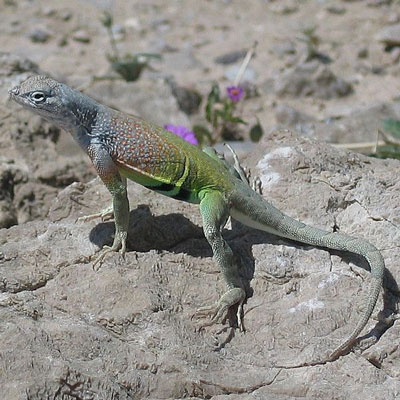
This greater earless lizard does not have ear holes on the sides of their head like other lizards.
Western Banded Gecko (Coleonyx Variegatus)
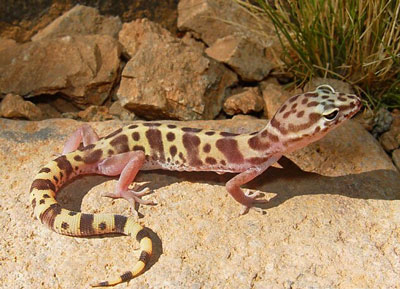
You can see this Western Banded Gecko in the desert only at night. Their skin appears awfully fragile and soft to the touch. They eat bugs.
Desert Horn Lizard (Phrynosoma Platyrhinos)
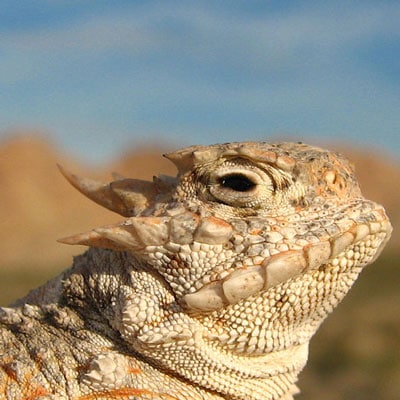
In the Sonoran Desert we find 10 different sub varieties of these tiny horned lizards. All of them (if so inclined) squirt blood out of their eyes as a defense mechanism. People also call them horny toads. It is difficult to find them in the desert where they live, and more so for photographing them.
Western Fence Lizard (Sceloporous occidentalis)
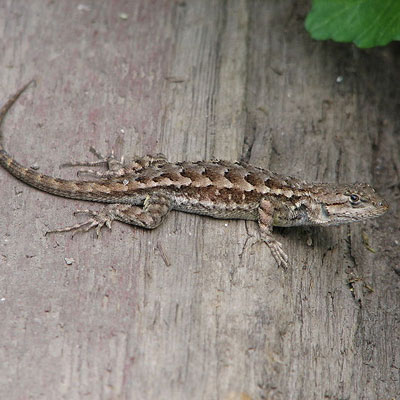
You can generally find them from the coastal regions to the high mountain peaks of 6000 feet and above. You find them only in the elevated deserts. You often see them clearly at these ranges. They flourish in different habitats that range from the highly elevated forests to the chaparral on the coast and the foot of the hills. Generally, you will find them on tree trunks, on the ground, the lower branches of shrubs, in wood piles and in rock crevices.
The reptiles, particularly the desert lizards exhibit the maximum diversity and variation among the animals of the desert. They have highly diversified temperaments and they differ in size and have many different color combinations. A few of them are violent while some are docile. They are more intelligent than you can imagine and can take you by surprise.
Interesting Note:
The occurrence of the Lyme Disease is reduced on account of the presence of these Western Fence Lizards in the locality of its existence! A latest discovery reveals that the spirochetes that infected ticks carry, perish when they feed on the blood of these lizards. In the regions where the Western Fence Lizards dwell ticks carry only 5%, disease, whereas in the other regions 50% ticks propagate this disease.

Having discovered a fondness for insects while pursuing her degree in Biology, Randi Jones was quite bugged to know that people usually dismissed these little creatures as “creepy-crawlies”.

